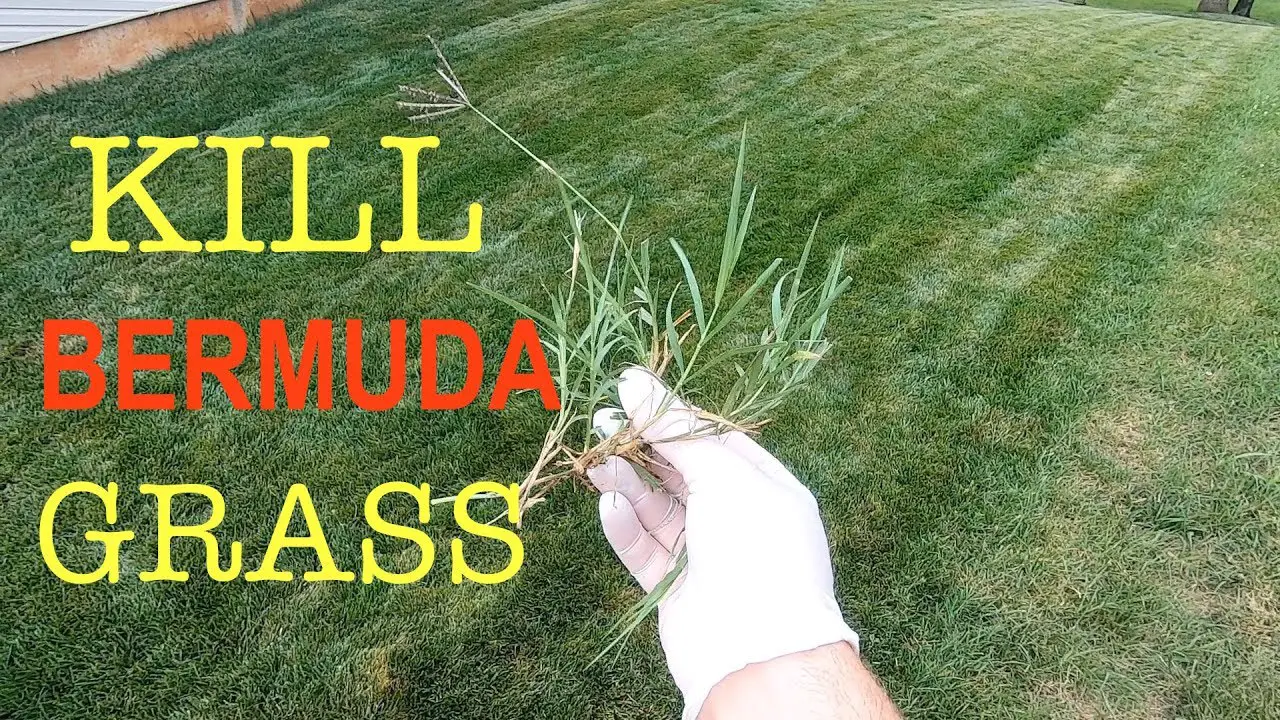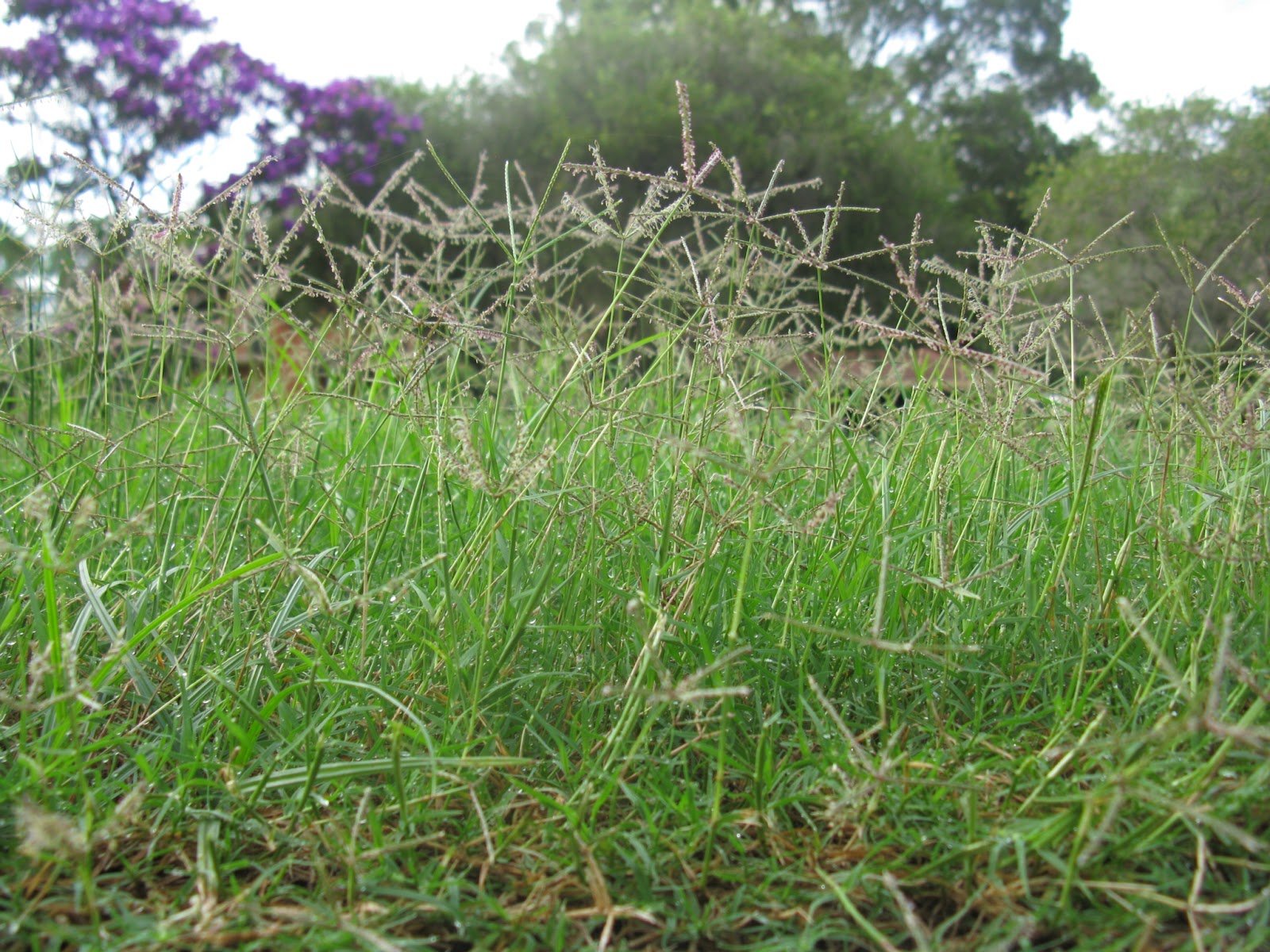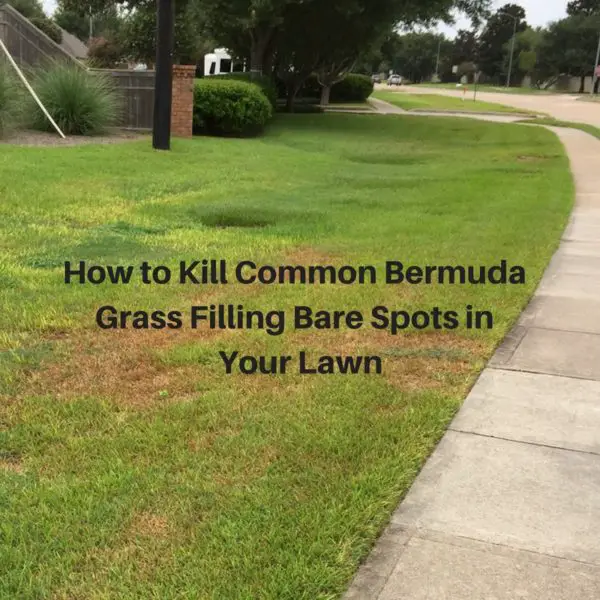Expert Opinion: Justin Moss Turfgrass Specialist Oklahoma State University
Justin Moss, Turfgrass Specialist, Oklahoma State University
Justin Moss is a turfgrass specialist and head of the Department of Horticulture and Landscape Architecture, Oklahoma State University. His areas of research include urban water quality, sustainable turfgrass management, and turfgrass plant physiology. Justin has multiple publications on Bermuda grass and lawn care.
Here you see an example of excessive scalping. People lower their mower all the way as low as it can go and they just go out and scalp the yard. And what you have is a lot of exposed bare soil. We want to avoid this because when you open up the canopy too much, you expose the bare soil, allowing a place for weeds to germinate. On the other hand over here, you see that we have removed about 50% of the canopy. It is still scalping, we still opened up the canopy, allowing sunlight to penetrate through so that the grass can green up but we havent gotten down to the bare soil.
Mow Fescue Lawn At A Higher Height
The first crucial step in suppressing the spread of Bermuda grass in your fescue lawn is to establish the perfect conditions for your tall fescue grass turf to dominate.
This can be achieved by mowing your lawn at a higher height . This will reduce the amount of sunlight supply to the Bermuda grass, thereby reducing its chances of thriving.
Fusilade Ii Turf And Ornamental Herbicide
- Proven to kill Bermuda grass weed within 21 days
- Selective herbicide safe on turfgrass
- Destroys many grassy weeds including crabgrass
- Safe for use on tall fescue and zoysia lawns
- Works best and fast with a surfactant
Although Fusilade II took about 9 days to start working, it killed all the Bermuda grass I was targeting along the edges of my lawn .
The results started to show after 9 days yellowing of foliage, stunted growth, and general weakening of the Bermuda grass shoots. Complete death of the weed occurred after around 21 days.
The active ingredient in Fusilade II is Fluazifop-p-butyl, a selective herbicide used as a post-emergent for the control of many annual and perennial grass weeds.
This herbicide is great for controlling grassy weeds not only in lawns but also in ornamental grasses, flower beds, golf-course turfs, driveways, and other landscaping areas.
Tip: For the best results, use Fusilade II with a non-ionic surfactant. It will help the herbicide stick onto the foliage and kill Bermuda grass faster. The best surfactant to use is the Southern Ag Nonionic Surfactant, which works by increasing the penetration, coverage, and overall effectiveness of the herbicide.
This weed killer is safe for use on common Bermuda grass weeds in tall fescue and zoysia. Do not apply on fescue lawns in the summer.
Don’t Miss: How To Bid Commercial Lawn Care Jobs
Choking Out The Weeds
This method is the exact reverse of solarization in which you will deprive the grass of sunlight and air. Bermuda doesnt thrive in well-shaded areas and this smothering method will accelerate wilting and browning.
Steps:
- Cover the spot with compost.
- Use two flattened out cardboard boxes as boards to cover the area and make sure they are held down securely to the ground.
- Wet the cardboard and cover it with mulched material.
- Allow at least 3 months for the grass to completely die off.
Natural Bermuda Grass Weed Killer

There are a variety of natural controls you can use on bermuda grass as well, but how effective they will be depends on your lawns specific properties and the extent of the infiltration.
Here are some basic techniques for naturally killing bermuda grass.
Now that youve learned how to kill bermuda grass, its time to formulate your plan and put it into action.
Whether youre considering a natural or organic process, a chemical herbicide or simply removing it as it shows up in your lawn, be sure that you are acting at the right time with the proper technique.
With a little diligence to keep bermuda grass from coming back, youll be able to enjoy your lawn again in no time!
You May Like: What Kills Mushrooms In Grass
Kill Bermuda Grass In Flower Beds And Around Trees
Yes, you can apply some non-selective herbicides around flowers and ornamentals. The Roundup Ready-To-Use Weed & Grass Killer III is highly popular among homeowners and is both efficient and easy-to-apply. It doesnt require mixing and includes a convenient sprayer with an extendable wand. One 1.3-gallon container covers about 400 square feet. The manufacturer promises that the product will kill Bermuda grass to the root, with first visible results being seen in just 3 hours.
The products active ingredients include 2% glyphosate and 2% pelargonic acid. The latter is an organic compound present in many plants and is widely used as a herbicide to prevent weed growth. You can safely apply this product around flower beds, vegetables as well as to cracks in patios. The amazing part about this solution is that it turns rainproof within just 10 minutes of application.
Make Tall Fescue Happy & Bermuda Grass Sad
(Editors Note: The plan is to finish off this article with tips for helping the fescue lawn dominate and thereby enhance the conditions for killing bermuda grass. I wanted you to have the info for using the most appropriate herbicides, immediately, and the rest of the article is not yet ready.The lawn care material will be added when completed. Until then…
One essential condition that you should introduce, if not already doing so, is this: mow your lawn at the correct height. Tall fescue grass thrives at a mowing height of 2 to 3 inches. Bermuda grass prefers a low mowing height. Mow your lawn at the higher rate and start depriving the bermuda of the sunlight it demands.
Sponsored Link
Read Also: What Is The Smallest Riding Lawn Mower Available
Can I Selectively Control Bermudagrass
When growing in bluegrass, ryegrass, or fescue lawns, bermudagrass can be selectively controlled by using the herbicide Tenacity . Multiple applications of the herbicide will be required throughout the summer and should not be started until bermudagrass has begun greening up in late spring. Tenacity will cause the bermudagrass to turn a bright white color, an indicator that it is working effectively. Note that Tenacity is NOT labeled for use in non-lawn parts of the landscape. Follow all directions for mixing and application of Tenacity to ensure effectiveness in controlling bermudagrass and to prevent injure to desirable turf.
Manually Removing Bermuda Grass Weed
When Bermuda grass weed only affects a small area, you can manually remove the weed with a shovel.
Bermuda grass weeds do not grow deep into the soil they instead spread vertically under the earth. This makes it easy to remove them from the ground.
The best time to do this is when the plant is still tender right after rainfall or after irrigation when the soil is still soft.
Force your shovel some inches under the ground and remove the grass alongside its root. Bag the grass and dispose of them.
You May Like: Best Way To Kill Wild Violets In Lawn
Can I Spray Herbicide To Eradicate Bermudagrass
Garden areas invaded by bermudagrass can be sprayed with an herbicide containing fluazifop . Read the label carefully before using, but it can be safely sprayed over most shrubs and flowers beginning in the early spring when bermudagrass begins growth. Several applications during the summer when the bermudagrass is actively growing will be necessary to successfully control this weed. For a few years following control, scout the affected for any regrowth of the bermudagrass. Note that applications of any herbicide for bermudagrass control are INEFFECTIVE if the bermudagrass is brown/dormant .
Using A Fabric Barrier
According to Cheryl Wilen, A state management program manager, you should be patient for at least 6 months to kill Bermuda. After scraping away the grass form your lawn, establish a landscaping fabric then cut holes in the fabric. Make sure that the holes are smaller, particularly where you want to plant.
Cover the cloth using mulch so that the sun does not destroy it. Irrigate with drip to allow water to reach only the planted areas. Monitor all the cut-out areas to prevent Bermuda intrusion. Keep weeds away from your yard.
Recommended Reading: Astroturf Yard Cost
Shade Tolerance Of St Augustine Compared To Bermuda Grass
St. Augustine, being one of the best options for home and commercial lawns, comes out as a clear winner when it comes to shade tolerance. It is one of the most popular grasses of choice for lawns throughout the United States.
It grows best in sandy soil with a PH that ranges from 5.0 to 8.5.
The best cultivar of this type of grass is Seville, Sapphire, Bitter Blue, and Palmetto. It doesnt only do well in the shade it also flourishes under direct sunlight. They can even live on only five to six hours of sunlight a day.
The purpose of cutting St. Augustine in a high setting is for the blades to absorb more sunlight and more of that ultraviolet energy it needs.
On the other hand, Bermuda which has a poor tolerance for shade, simply cannot thrive with no sun.
Move Forward With Fescue Lawn Protection

Having a beautiful lawn full of healthy Fescue grass is something that many homeowners enjoy each year.
Being able to keep it safe from weeds or even Bermuda grass is a maintenance step that is necessary since the two grass varieties are able to grow in similar environments.
If not treated, unfortunately, Bermuda will often take over and kill the Fescue.
Take advantage of one of the listed methods to kill the Bermuda grass and continue enjoying your lawn all season long.
Don’t Miss: Anthills In Yard
Natural Ways To Get Rid Of Bermuda Grass
When thinking about ways to kill the weeds, what is the first thing that comes to your mind? Of course, to use herbicides, right? Indeed you can do that, and we will talk about it a bit later. However, did you know that there are still ways to get rid of weeds naturally? Do you know about them? Here we cover several interesting methods to remove Bermuda grass, so lets have a look.
The Most Effective Ways Of Getting Rid Of Bermuda Grass
Related Articles
Bermuda grass originally hails from Africa, but grows in U.S. Department of Agriculture plant hardiness zones 7 through 10. It’s often used for lawns. If you’re trying to get rid of your Bermuda grass, whether it’s to make room for other plants or to replace it with a new variety of lawn grass, you have several effective options for killing a Bermuda grass lawn.
Read Also: Is Trugreen Lawn Care Safe For Pets
How To Kill Bermuda Grass In Fescue Lawn
If Bermuda grass is attempting to take over and overrun the Fescue that is planted, natural removal options like digging with a shovel or covering the ground to prevent sunlight and kill the roots can be a method you can use. For larger invasions of Bermuda, herbicide usage may be the solution you need.
Removing Bermuda Grass By Hand
Recommended Reading: Cost Of Trugreen Service
How To Kill Bermuda Grass By Vinegar
Do you have vinegar in your kitchen? If yes then it will be very helpful for your lawn. Usually, vinegar is used for cooking and preserving food as well.
But do you know it is also used to kill Bermuda grass? Yes, it is right! It is a natural way of killing unwanted weeds.
Take high-quality vinegar from a store and apply 10% of vinegar solution on the weeds to wipe out them organically.
Always follow the instructions given on the bottle as it is a non-selective natural grass killer. Be careful! It can also destroy your lawn grass with unwanted weeds.
Choose The Right Day To Spray Crabgrass
Spray crabgrass killer on your lawn on a calm, wind-free day with a high below 90 . Excessively hot temperatures can cause Quinclorac to damage Bermuda grass. Additionally, hot and/or windy conditions can cause the herbicide spray to evaporate before it can be absorbed by the crabgrass grassy weeds. A cool, overcast day with very little wind is your best choice.
Don’t Miss: Reseeding Dead Spots In Lawn
Will Bermuda Choke Out Crabgrass
Although Bermuda is a fast-spreading grass type, its very unlikely to choke out crabgrass. Crabgrass is an annual weed that sprouts and grows quickly before casting its seeds and dying. Although a thick Bermuda lawn will discourage crabgrass from sprouting, once this weed takes hold it simply grows too quickly for Bermuda to fend it off. So, when crabgrass appears youll have to get rid of it yourself.
Which Method Is Best

The method you choose depends on what you wish to achieve:
- For a large, empty area that you plan to turn into a new lawn or garden bed later, consider smothering, solarizing, or using herbicides.
- For smaller areas, or those that don’t have much Bermuda grass in them, digging and pulling, smothering, and solarizing work very well.
- If you’re working around existing plantings, pulling is likely the simplest way to remove Bermuda grass.
Don’t Miss: How To Get Rid Of Violets
Use Potent Concentrate To Deal With A Severe Bermudagrass Infestation
The Compare-N-Save 016869 Concentrate Grass and Weed Killer is perhaps the most powerful solution on the market. One-gallon pint of fungicide contains as much as 41% of glyphosate. The concentrate can make over 80 gallons of ready-to-use solution that covers up to 25,000 sq. ft. For general control, add 3 tbsp of the concentrate to one gallon of water. If you are dealing with more persistent Bermuda grass, mix 5 tbsp to one gallon of water. Depending on the dilution rate, you can use it on driveways, along fences as well as around flower beds, trees, fruit, and vegetable gardens.
How To Stop The Spreading Of Bermuda Grass
Well, it is also possible to manually remove Bermuda grass weed.
- To easily access to the roots, first, mow the lawn.
- Then manually pull all the grass below the root.
- Make sure to remove all the live roots because they might spread if they stay in the soil.
- Also, keep in mind that the process of stopping the spread of Bermuda grass can last even up to 4-5 years. Yes, its a while, but in the end, it will all be worth it.
You May Like: Smallest Cub Cadet Riding Mower
Dig Or Pull Selectively
If you don’t have a very large lawn, or you don’t have an overwhelming Bermuda grass problem, you can pull the grass by hand.
Herbicides Can Be Applied In Early Spring
How to get rid of bermuda grass in your lawn. If bermuda grass is attempting to take over and overrun the fescue that is planted, natural removal options like digging with a shovel or covering the ground to prevent sunlight and kill the roots can be a method you can use. The best time of year to plant fescue is in early fall. If you want to get rid of the centipede grass immediately, then spray quinchlorac on the patch of centipede grass.
Mulching flower and plant beds will help Keep the mowing height fairly high , irrigate to 6 inches twice per week and fertilize at the appropriate time and rate for your sod species. All you have to do is mow it more often and at a higher.
Mulching kills bermuda grass and enriches the soil as it decomposes, preparing the area for prompt replanting. If bermuda grass has already invaded your lawn, apply herbicides. Check out my full ultimate guide to st augustine grass.
It will also kill the bermudagrass and any other desirable plant it touches. Will msma kill centipede grass? Glyphosate is an indiscriminate herbicide
Use old cardboard panels to smother the base of the bermuda grass to kill it. If you have fescue grass, you can also use it to choke out the bermuda grass. However, the baking soda will raise the alkaline level in the soil which could cause damage to the grass.
This is best done using landscaping fabric. The easiest way to remove the bermudagrass is to use a sod cutter, which will cut out. To prevent the bermuda grass in st.
Also Check: How To Use An Overseeder